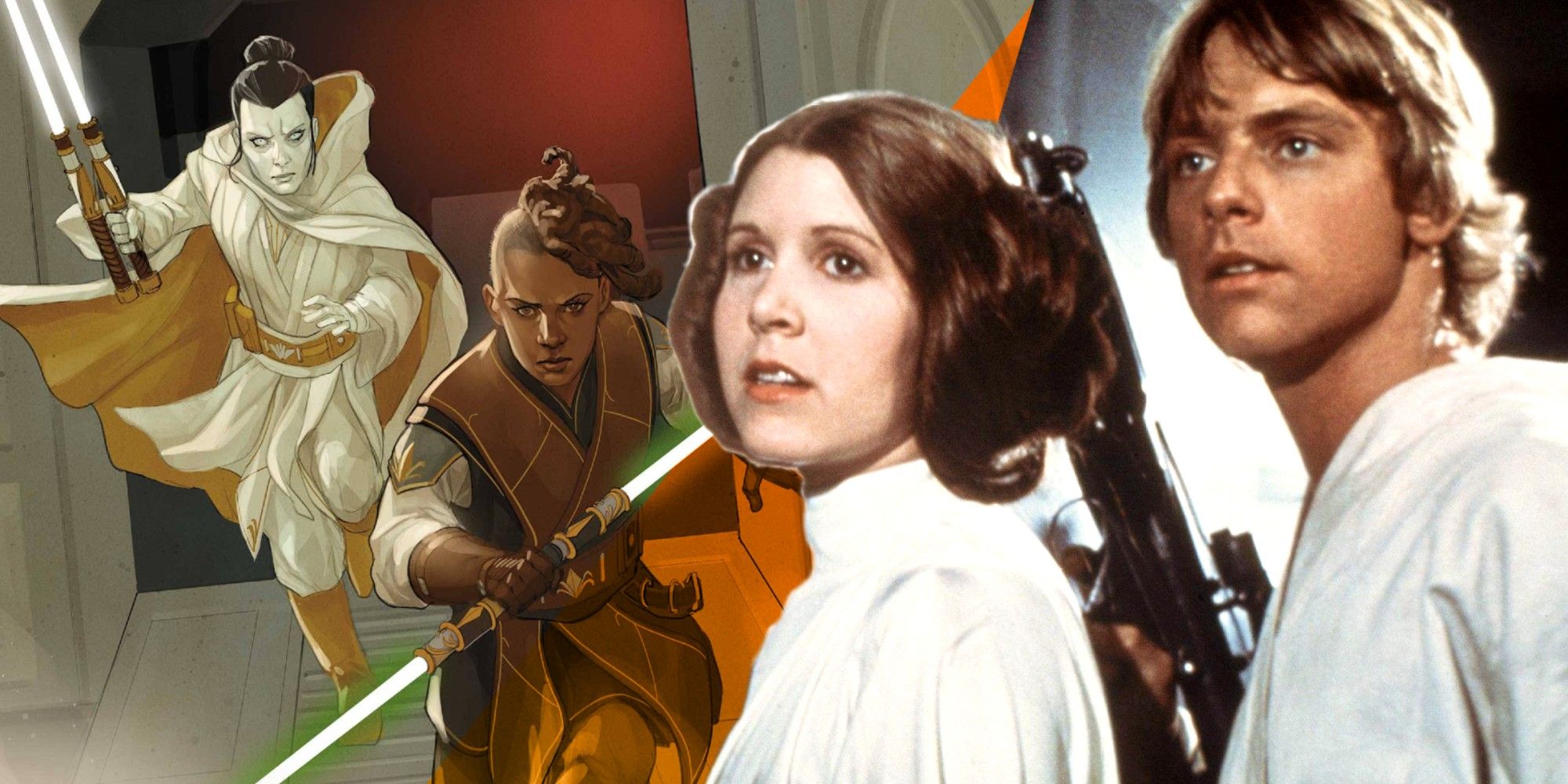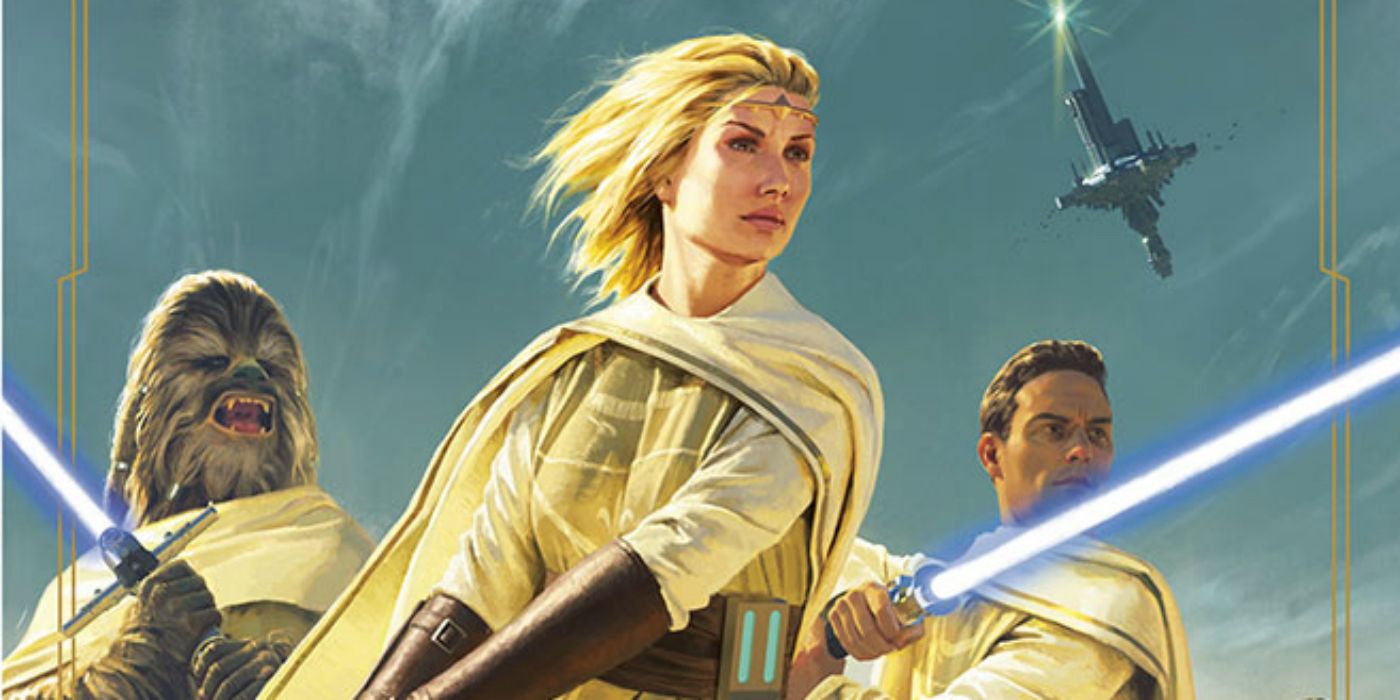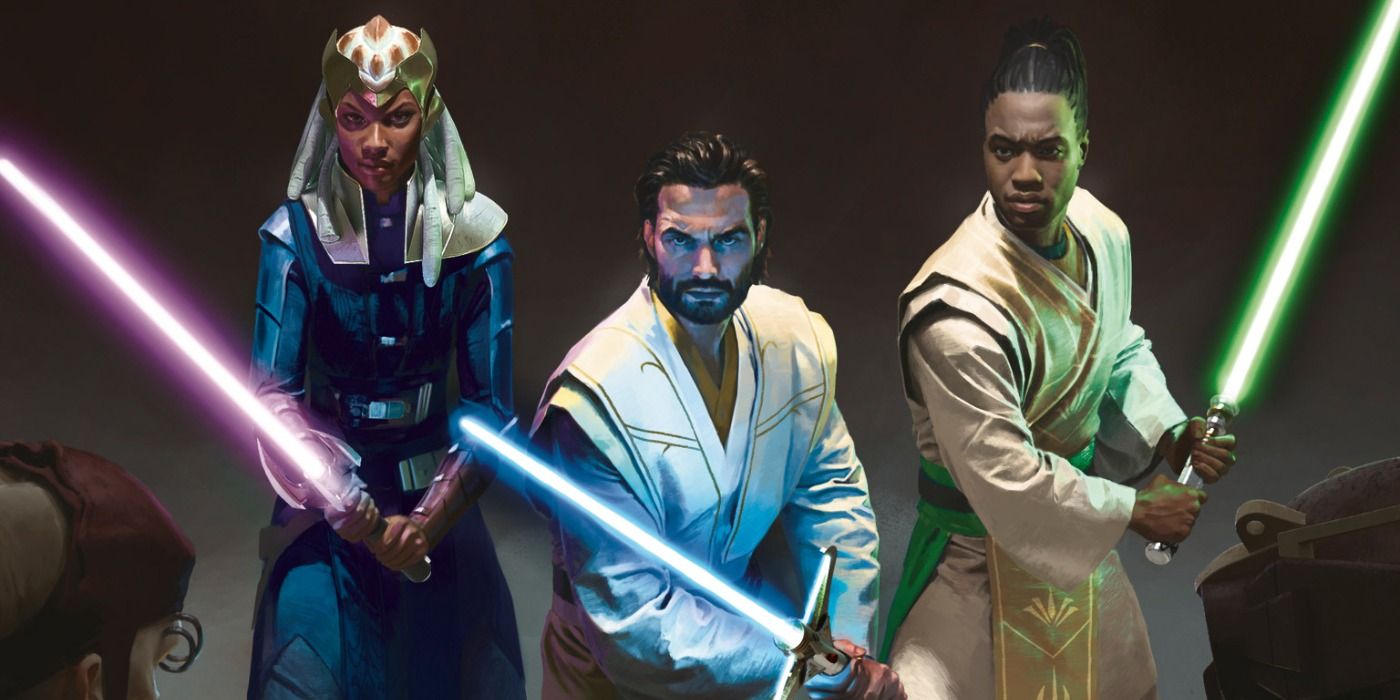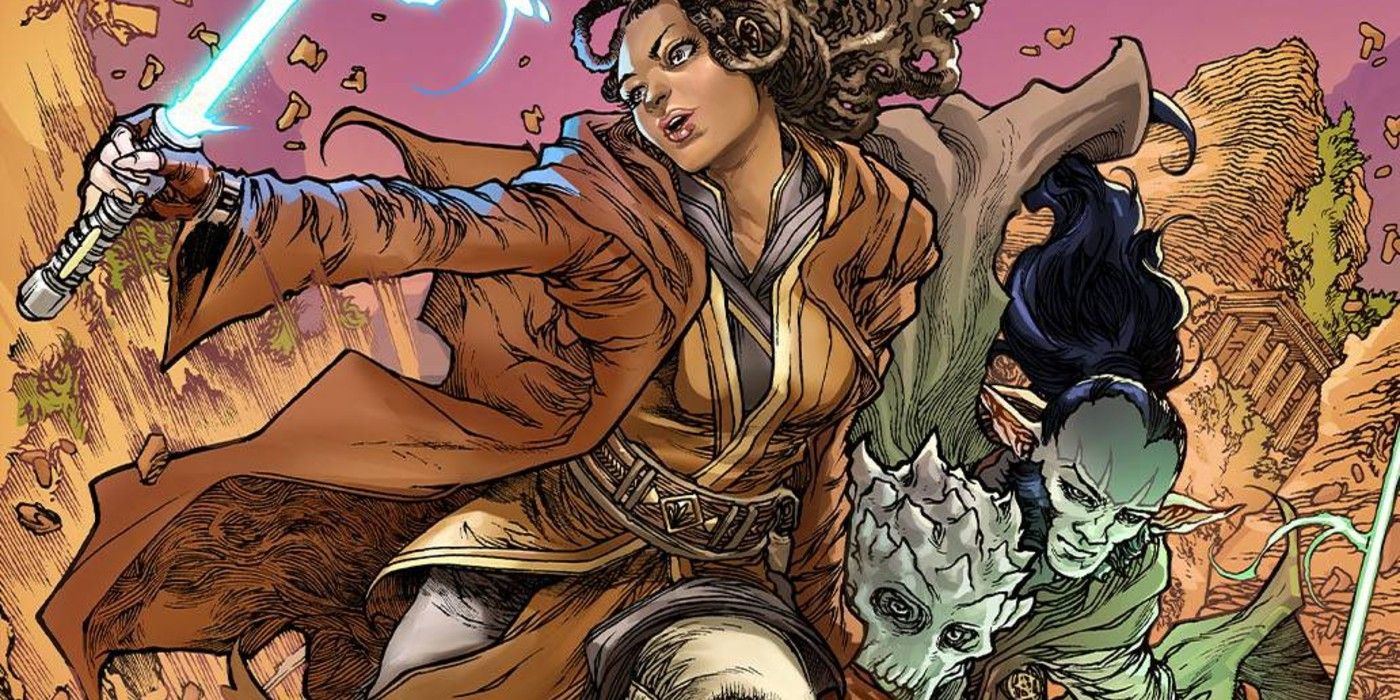Now that it’s definitively known that the upcoming third wave of book releases for Star Wars: The High Republic will mark the endpoint of its opening storyline, there’s enough information to ask this question: will this giant multimedia initiative repeat the narrative problem of the overarching Star Wars canon? When originally announced, Lucasfilm had promised audiences an epic narrative, told across multiple years, that would fill in the time period two centuries before Star Wars: Episode I – The Phantom Menace, when both the Galactic Republic and the Jedi Order were at the height of their power (and decency) and before the bureaucratic rot would begin to set the stage for Darth Sidious’s eventual rise to power.
After the San Diego Comic-Con last weekend, the publishing program can come into much clearer focus, letting fans estimate how long it will run, how many core story events it’ll consist of, and how many novels (the cornerstone medium within the endeavor) will ultimately be released. It’s enough to begin to show some similarities between The High Republic and the Skywalker Saga, the general name for the nine main installments of the Star Wars film series; the movies are, of course, broken up into three different trilogies (the prequels, originals, and sequels), and this new undertaking is likewise broken up into three different phases (which are officially called Phase I: Light of the Jedi, Phase II: Quest of the Jedi, and Phase III: Trials of the Jedi).
The potential problem with this general storytelling arrangement is the unintended echoing of the films along with the deliberate copying – how, more specifically, the core narrative relates to the near-endless stream of add-on multimedia releases. If the reading public deems these side stories mere padding, then The High Republic may be far more short-lived or financially constrained than Lucasfilm had ever imagined.
How Star Wars: The High Republic Is Structured
Phase I of The High Republic consists of three major story events, with the first two depicting the opening of Starlight Beacon (a major space station that serves as a communications hub, a waypoint for travelers, and the biggest Jedi temple outside of Coruscant) and the Republic Fair (a World’s Fair-esque celebration of all things Republic on the planet Valo). These happenings get told not once, but three different times each, in books that overlap and intersect with one another; although they focus on different sets of characters, sometimes in different locations, they are all referenced across the entire trio of stories, with the cast of characters from one release popping up – even if briefly – in the others.
What’s more, these three tales occur in three different formats: one adult and one junior novel, which are published on the same day, and one young-adult book, which drops about a month afterwards. Lucasfilm affords readers little spats of breathing room between each round of volumes, meaning the publishing calendar looks like this: the first batch of titles landed in January and February 2021, with the second grouping appearing in June and July and the third and final triptych materializing in January and February 2022. All told, that means Phase I: Light of the Jedi will span 13 months and comprise nine novels.
Assuming that Phases II and III will follow this same pattern (a safe assumption, given the Star Wars track record since The Walt Disney Company took control of the franchise nine years ago), that means audiences are looking at a grand total of nine narrative incidents, told across 27 interconnected installments, with a projected end date of February 2025.
How The High Republic Mirrors the Skywalker Saga
When stripped down to its bare essence – a trio of tales told across three different storytelling chunks – The High Republic’s template is remarkably similar to that of the Skywalker Saga’s three trilogies of films. It’s an occurrence which, given creator George Lucas’s focus on parallelism and “rhyming,” doesn’t seem at all accidental.
It’s clear that this allusion, if not homage, is definitely on the minds of the authors themselves; Cavan Scott, the writer of The Rising Storm, the second High Republic adult novel, has invoked comparisons to Star Wars: Episode V – The Empire Strikes Back, which are actually fitting given this latest offering doesn’t much advance the overall plot but does significantly raise the character work and general sense of dread – along with ending on a cliffhanger. It’ll be interesting to see whether the transition from Phase I to II holds just as much import as the progression from the prequel to the original trilogy, and it’ll be even more interesting to see whether a similar amount of time will transpire between the two narrative units. So far, High Republic has only had one year pass between its first two books (the movies had anywhere from one to three, on average, with multiple decades passing between the trilogies).
There’s another, possibly more profound way, however, in which The High Republic mirrors the Skywalker Saga: the proliferation of all its related interstitial material. In addition to either the 27 books or the nine films, there is a cacophony of tie-in releases which help to expound upon the core mythology without necessarily being integral to its progression – already, in High Republic’s case, there has been several short stories, two monthly comic-book series, and a videogame appearance, with several comic miniseries and an audio drama lined up. In addition, there's an upcoming television show, Star Wars: The Acolyte, which has been announced for Disney+ and which is said to take place towards the end of this particular galactic era. These extra adventures essentially act as side-stories, sometimes taking place simultaneously with one wave of novels or another and then working to help fill in the gaps between them – just as the larger Star Wars canon has done with the various movies for years now, and just as it will soon do with the upcoming slate of television shows.
The Pitfalls of Star Wars Canon Storytelling
That Disney would want all of its various Star Wars novels, comic books, short stories, audio dramas, and videogames to play second fiddle to its new stable of films and TV episodes makes a certain amount of sense on paper; the company wanted to afford its filmmakers a great deal of storytelling flexibility, after all. Furthermore, each new visual release includes a swath of new characters, locations, and organizations that need to have their backstories fleshed out and intertwined with the existing material (just how did Princess Leia Organa first meet Admiral Amilyn Holdo?) – and there are already a number of loose plot threads moving from one trilogy to the next that need to be tied up (such as, say, the ultimate fate of Jar Jar Binks or just who, exactly, the Knights of Ren are).
In practice, however, the decision essentially condemns this newly christened canon to a certain level of irrelevance – readers can pick up any new book or comic issue safe in the knowledge that no galaxy-wide event will transpire, lest it potentially trip up any future cinematic undertakings. (And even with this general approach having been adopted, audiences have still seen Star Wars canon contradictions with events originally depicted on the printed page being repeated on the small screen, greatly undermining the sense of a unified narrative landscape.)
This exact same two-track approach to storytelling already seems to be afflicting The High Republic. Yes, The Rising Storm may reference the Drengir invasion seen in the High Republic monthly comic series, and the latest junior novel, Race to Crashpoint Tower, may act as a direct sequel to the first five issues of the other comic book, The High Republic Adventures, but these additional titles have only been afforded so much room to maneuver in, essentially telling stories that revolve around the background players of the multimedia initiative (or the backstories of the main cast, such as the upcoming Monster of Temple Peak graphic-novel miniseries, which will delve further into the character of “[light]saber-for-hire” Ty Yorrick). How important is it, really, for readers of Crashpoint Tower to learn how, exactly, the characters of Lula and Zeen meet? The scenario may come across to them as more glorified backstory-spinning, even though, technically, the comic issues came out months before the junior book did.
The effects of Lucasfilm essentially replicating its storytelling structure from the Star Wars canon, generally, to The High Republic, specifically, are pretty pronounced – in particular, the main narrative spine may be well defined and limited to a certain number of novels, but everything else is malleable, infinitely open to future releases. This actually has the potential for a terrifically muddled playing field, with these add-on tales essentially acting as filler to pad the publishing program out indefinitely (who’s to say that the company won’t want to keep pushing backstory-explainers well past the date of February ’25?). This could not only drown out the core volumes in a near-endless sea of tie-in materials, it could also turn off a fair number of audience members, who can rest assured that everything outside of the novels themselves will only be tangentially connected, at best, to the base story they care about.




